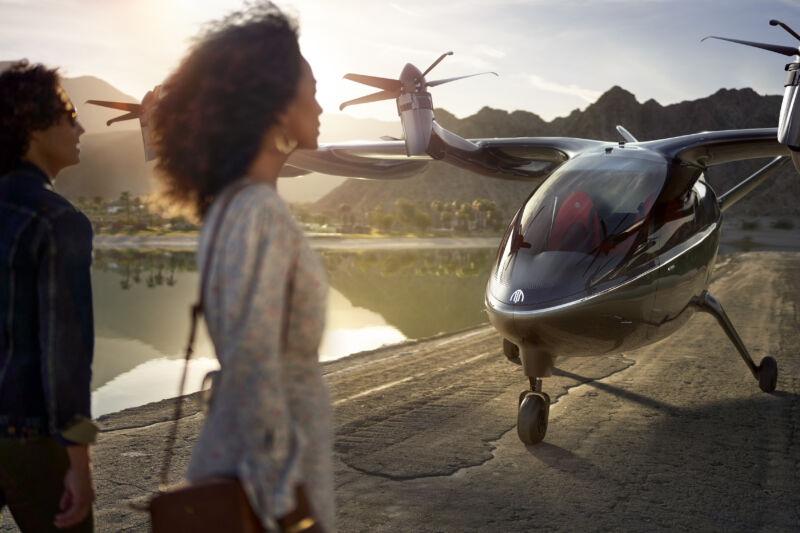
The success of uncrewed electric drones in the last couple of decades has caused some people to wonder if similar construction techniques to those used in drones could be employed to create small electric aircraft to carry people.
Not only are electric motors more reliable than conventional engines, but they're also light enough that you can put several of them on a single aircraft, offering an extra margin of safety. The ability to use several motors—together with sophisticated software—means greater design flexibility, opening the door to new types of vertical takeoff and landing (VTOL) aircraft that straddle the line between conventional airplane and helicopter.
This technology got overhyped in the late 2010s. Uber, for example, announced in 2017 that it was aiming to launch a VTOL taxi service in Dallas and Dubai in 2020. Instead, Uber sold off its air taxi efforts to startup Joby in December 2020.
But while the VTOL revolution hasn't happened as quickly as some early boosters hoped, the industry is making progress. The latest sign is an announcement that United Airlines is investing in VTOL startup Archer and has placed a $1 billion order for 200 VTOL aircraft.
Archer is also raising money from Stellantis, the company formed by the recent merger of carmakers Fiat Chrysler and PSA Peugeot. Stellantis will help Archer make the carbon-fiber fuselage for its aircraft. The investments are part of Archer's plan to become a public company via a merger with a Special Purpose Acquisition Company.
While battery electric aircraft have a number of advantages, the low energy density of batteries (compared with fossil fuels) means that electric vehicles have limited range. Archer's first aircraft, due out in 2024, is designed for a range of 60 miles (100km) with a maximum speed of 150 miles per hour (240km/h). This obviously isn't a long enough range to replace conventional commercial airline flights.
Short hops and big hurdles
Archer and others working on this technology envision a new class of intra-urban air service. A United customer might travel a short distance by car to a nearby "vertiport"—perhaps in a suburban parking lot or atop an urban skyscraper. Then the customer might fly 20 or 30 miles to an airport in 15 or 20 minutes—a trip that might otherwise take an hour by car. VTOL aircraft could also rapidly transport passengers between nearby cities—for example, San Francisco to Palo Alto, Dallas to Fort Worth, or Baltimore to Washington, DC.
Of course, it's theoretically possible to do this by helicopter, and some wealthy people already do. But advocates argue that electric VTOL aircraft have the potential to be safer, quieter, and much cheaper than a helicopter. Archer says that its aircraft will produce "minimal noise," and that the cost will be comparable to an Uber ride.
Archer's initial aircraft will require a pilot. But VTOL advocates hope that we'll eventually have software sophisticated enough to steer the aircraft on its own—simultaneously eliminating the cost of paying the pilot and opening an extra seat for a passenger.
Beyond the technical challenges of designing the new aircraft, the VTOL vision also poses significant regulatory challenges. It takes several years for the FAA to sign off on a new aircraft design. Moreover, getting urban air transportation to work at scale will likely require an overhaul of the air traffic control system. A large number of small airplanes traveling short distances could overwhelm the existing system.
Article From & Read More ( United Airlines orders 200 vertical-takeoff electric airplanes - Ars Technica )https://ift.tt/3aQCYGs
Business
Bagikan Berita Ini















0 Response to "United Airlines orders 200 vertical-takeoff electric airplanes - Ars Technica"
Post a Comment